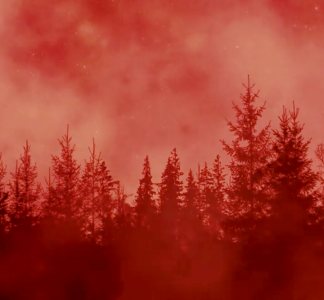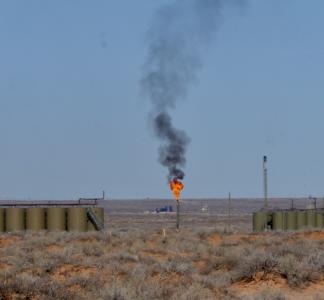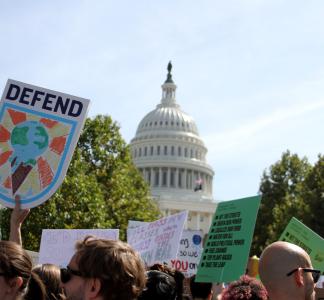Stories from the Permian Basin: James Goodbar

James Goodbar
Mason Cummings
James Goodbar worked for the Bureau of Land Management out of the Carlsbad, New Mexico, field office for nearly four decades. We spoke with him about witnessing the Permian Basin oil and gas boom over time. Here’s what he had to say: (This interview was edited and shortened for clarity)
“I've been visiting eastern New Mexico since about the mid 1960s. It's just a magical place. I mean, holy cow. Part of what just captured me about southeast of New Mexico was this huge mix of all these different eco-types.
If you want to see something from the Great Plains, you just go over on this side of the river. If you want to see something in the mountains, you go down south a little way. You want to see caves and gypsum and all kinds of stuff, that's everywhere.
I worked for the Bureau of Land Management here in southeast New Mexico for 38 and a half years. So my first job with BLM was doing all of their wilderness inventory— basically going out and looking at every single tract of land in southeast New Mexico that was federal. I got to see a lot of it. In the meantime, oil and gas kind of creeps in.
I can't see that anybody could ever be against oil and gas. It's part of what we are. And whether it's wind power or solar power or nuclear power or wave power or geothermal power or hydroelectric power or oil and gas, there are impacts and there are consequences for every one of those. And I don't believe that any one type of energy is going to serve us. It's going to be a mix of things.
[What] would help is better land use planning on a broad, huge scale, identifying what the important resources are and protecting them. If you don't want them to drill it, don't lease it.
The impacts [from the oil and gas industry] that I've seen have been fragmentation of huge, big tracts of lands. You get more pipelines and power lines and roads and equipment, storage and tank batteries that come into an area, and all the land gets cut up. [So] you wind up with a spiderweb of fractured habitat. And from a wildlife standpoint, it really is bad. There's no free flow.
On any day you can go out and see a number of wells flaring or venting or leaking, so you get a lot of methane coming up. And every single spill, every single release, every single busted pipe, all of those have an impact.
One of the other things that's kind of insidious that you wouldn't think of that the [oil and gas] industry has brought is, there's no more night sky.
All the flares, all the pads out there with lights on them, all the transfer stations and tank batteries, it’s just like a sea of lights. And when they start flaring the wells, it lights up the whole sky. Trying to find the Big Dipper is kind of hard now.
Out here at night, it used to be dark. The Milky Way was just like a highway strutting across the sky, you know? And it was dead quiet, except for the coyotes. And that was magic. And it's gone.”



